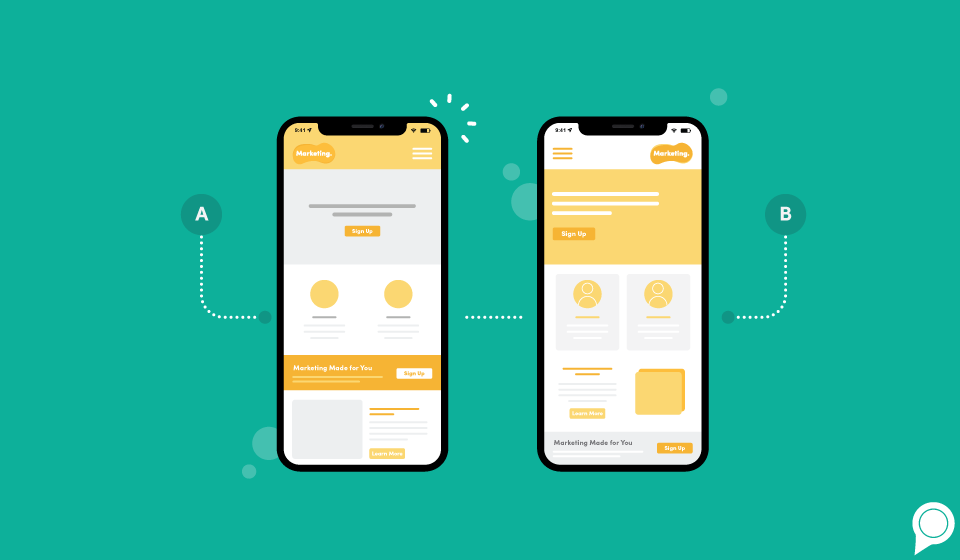

A|B testing, or Split Testing, could be the missing piece to achieving major breakthroughs with your business’s marketing and online presence. Instead of “feeling like” something might work or not work in your marketing, A|B testing gives you hard data on what’s worth trying or not. In other words, A|B testing gives you a greater ability to make informed decisions surrounding your business’s marketing goals and overall revenue goals.
In this blog, we will talk through the basics of A|B testing and why you should consider implementing it into your routine digital marketing strategies.
Quick Breakdown…
Let’s jump in.
A|B testing is a method of improving marketing assets and strategies to more effectively meet a certain goal. It’s an experiment wherein you split your audience into two or more segments and show each group the same content with slightly different variations.
Here’s an example: say you want to improve conversions on a landing page. There are several different elements of the page you could alter to increase performance. To have a successful A|B test, it’s important to only manipulate one element at a time.
You could start by testing CTAs, or calls-to-action. Styling two different landing pages where one CTA appears in the header and the other appears as a pop-up is a great example of isolating one variable to test the CTA's performance. Every other element of the landing pages should be identical. Next, you'll want to split the traffic between your two landing pages to coordinate with your A|B segments. One example is linking the two landing pages to two different ad sets targeting each of your split segments.
Run the ad campaign with the A|B test for a set amount of time. If you were testing for conversions, see which version of the landing page achieved a higher conversion rate and you have your winner! Analyze the results from the different CTAs and plan your next marketing campaigns and assets with the new data in mind.
The primary goal of running an A|B test in marketing is to improve the performance of your campaigns or assets. Digital marketing and consumer expectations for their online experience with companies are getting higher and higher. This means that your marketing strategies should be continually and creatively evolving to meet these new demands. A|B testing is one great method to improve your campaigns and keep up with the ever-changing landscape.
A|B testing offers data-backed strategies to reach the goals you have for your business’s marketing. It takes all guesswork and “hunch-based” decision making out of the equation. Making decisions for your marketing can often mean making decisions for the revenue potential for your business. That’s not something you want to guess at or wonder about! A|B testing offers surefire results you can count on to perform.
You can A|B test almost anything. Here’s a list of several different areas of improvement you could test:
Within each of those areas, you can test many different elements. As we said before, you can test CTA placement. You could also test CTA design, copy and more. Additionally, you can test ads, landing page content, keywords, website design, social media strategies and many more elements of your marketing.
We’ve already discussed the importance of isolating one variable at a time when conducting an A|B test. A few other things to keep in mind are:
Final thoughts…
Hopefully, you’ve seen the value of conducting A|B tests regularly and the impact they can have on your business. A|B tests, while they might seem complicated, are quite simple and doable. By implementing A|B testing into the routine of your business’s marketing strategy, you’re giving yourself the best chance at making informed and impactful decisions for your business that can result in exponential growth.
If you liked this blog, check out RevLocal’s other resources here. If you want to know more about what it’s like to have RevLocal handle your business’s digital marketing, contact us for a free consultation with one of our experts.
Subscribe to our email list to get the latest digital marketing content delivered to your inbox each week!